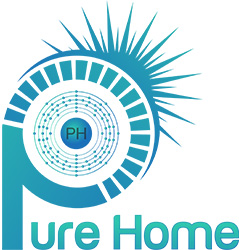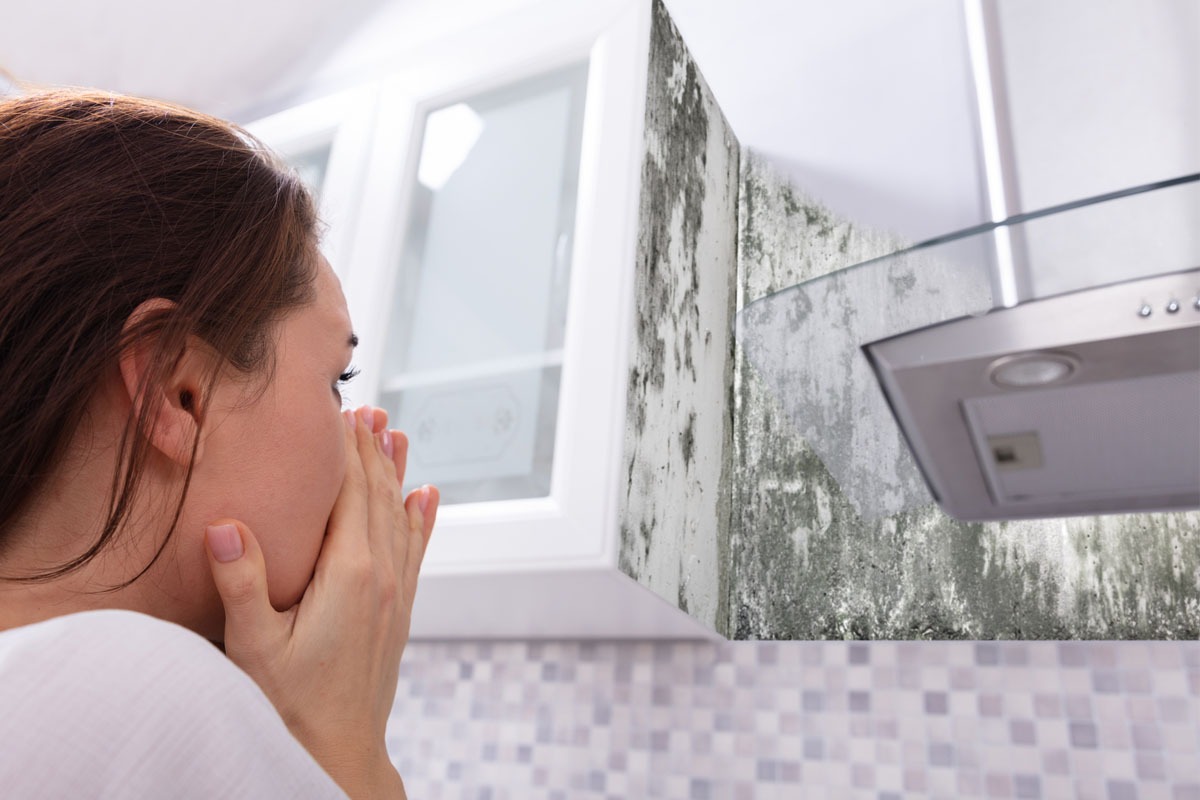What Does Mold Smell Like
Have you ever noticed a musty or unpleasant smell in your home and wondered if it could be mold?
Mold is a type of fungus that can grow in damp and humid environments, leading to various odors.
We will explore the different types of mold smells, including substances like Geosmin and 1-Octen-3-one, and why they emit these distinct odors.
Learn about the factors that affect the smell of mold and get tips on how to identify and remove mold issues in your home.
Discover more about the intriguing world of mold smells.
Key Takeaways:
- Mold can have a variety of smells, including earthy, musty, or even sweet. This is due to the release of chemical compounds such as geosmin and 2-MIB.
- The type, amount, location, and environmental factors like temperature and humidity all play a role in the smell of mold. Different mold smells can indicate the severity and type of mold present.
- If you notice a moldy smell, it’s important to take action immediately. This includes identifying the source, addressing any underlying issues, and seeking professional help for proper mold remediation.
What Is Mold and How Does It Form?
How do you know if your home has mold? Mold is a type of fungus that grows in damp environments and thrives on organic matter. It forms when spores land on a suitable surface and find the right conditions of moisture, warmth, and food to grow and spread.
The growth process of mold is fascinating yet concerning. Once the spores find their ideal environment, they germinate and start producing hyphae which form a tangled network. This network then expands, establishing visible patches of mold on surfaces.
Moisture is a critical factor in mold formation, as it provides the necessary hydration for its growth. Warmth also plays a significant role, as mold tends to thrive in temperatures between 77-86 degrees Fahrenheit.
When mold proliferates in indoor spaces, it can have detrimental effects on both human health and the environment. Inhalation of mold spores can trigger allergic reactions, respiratory issues, and even worsen asthma symptoms.
Why Does Mold Have a Smell?
Mold emits a distinct odor due to the release of microbial volatile organic compounds (mVOCs), which are byproducts of mold metabolism. These compounds are recognized by the EPA as potential indicators of indoor air quality concerns, posing risks to human health and safety.
What Are the Different Types of Mold Smells?
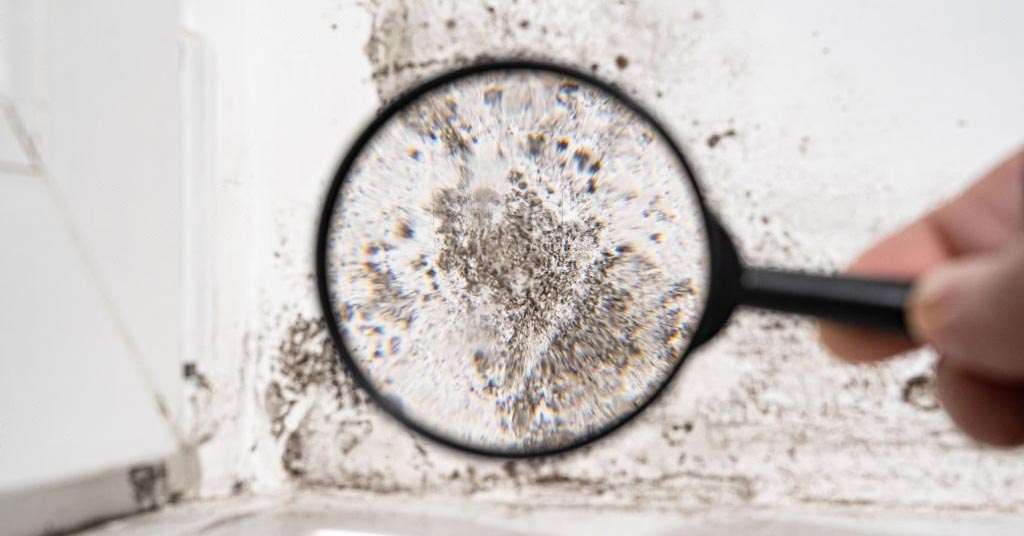
The smell of mold can vary depending on the type of mold present, with some common odors including earthy notes like geosmin, musty tones from 2-Methylisoborneol (2-MIB), and hints of decay from certain species like Stachybotrys chartarum.
These distinct smells are a result of various chemical compounds produced by molds, each contributing to a unique olfactory experience. Geosmin, for instance, is responsible for the characteristic earthy scent often associated with damp environments. On the other hand, 2-MIB releases a musty odor that is commonly linked to mold growth in enclosed spaces. Understanding these olfactory characteristics can help in identifying mold presence early on.
Geosmin
Geosmin is a naturally occurring compound produced by certain molds and fungi, known for its earthy aroma.
Due to its distinct smell, geosmin serves as a key indicator of mold presence in indoor spaces, often accompanying fungal growth. When detected, it can signal potential health hazards, including respiratory issues and allergies, necessitating prompt attention. Identifying geosmin through professional testing is crucial for effective mold remediation, ensuring a safe and healthy environment for occupants. Facilities equipped with proper monitoring and remediation services can mitigate the risks associated with geosmin exposure, protecting both the structural integrity of buildings and the well-being of individuals.
2-Methylisoborneol (2-MIB)
2-Methylisoborneol (2-MIB) is a chemical compound often linked to musty odors associated with mold growth. Recognizing this distinctive smell can prompt the need for mold testing and remediation to ensure indoor air quality and safety standards are met.
2-MIB’s olfactory properties play a crucial role in identifying mold issues; its earthy, aquatic scent serves as a signature clue for the presence of mold contamination. This compound is a common culprit in indoor environments, hinting at potential health risks and compromising air quality.
Understanding the significance of 2-MIB in the context of mold detection highlights the necessity for professional assessments to gauge mold levels accurately. Licensed remediation services are equipped to handle the complexities of 2-MIB detection and removal, ensuring thorough mitigation of mold-related hazards.
1-Octen-3-ol
1-Octen-3-ol is a compound associated with the characteristic odor of mold, often described as mushroom-like or earthy. Instances of this smell in urban environments like New York City can signal potential mold infestations and decay.
The distinct scent profile of 1-Octen-3-ol, with its earthy and fungal notes, is not just indicative of mold presence but also serves as an early warning system for indoor air quality concerns. In metropolitan settings, the detection of this compound may point towards hidden mold growth in damp areas, ventilation system issues, or decaying organic matter.
Not only does the presence of 1-Octen-3-ol raise red flags for mold infestations, but it also underlines the importance of addressing underlying moisture problems in urban spaces. By identifying and eliminating sources of this compound, individuals can improve their living environment and mitigate potential health risks associated with poor indoor air quality.
3-Methyl-1-butanol
3-Methyl-1-butanol is a compound associated with the smell of rotting wood, often found in environments with decaying organic matter. Its presence may indicate mold growth and the dispersal of spores in indoor settings.
When 3-Methyl-1-butanol is detected, it often triggers a sense of alertness due to its strong resemblance to the musty aroma of decaying wood. This compound is commonly associated with mold infestations, especially in damp and poorly ventilated areas. The olfactory characteristics of 3-Methyl-1-butanol serve as a distinct marker for identifying potential mold sources. By recognizing this particular scent, individuals can pinpoint areas where mold growth is likely occurring, enabling them to take necessary steps to address spore contamination and prevent further spread.
1-Hexanol
1-Hexanol is a compound associated with a sweet, fruity smell similar to green apples or vinegar, often linked to mold growth in indoor environments. Recognizing this odor can prompt safety measures and the need for professional mold remediation services.
The distinctive scent of 1-Hexanol is often described as slightly musty, providing a crucial cue for the detection of hidden mold infestations. When encountering this musty odor, individuals should not ignore it but take proactive steps to address the potential mold issue promptly. Implementing safety protocols such as using appropriate respirators and protective clothing when investigating moldy areas is essential to prevent exposure to harmful spores. Licensed professionals play a vital role in inspecting, evaluating, and properly addressing mold problems, ensuring thorough remediation procedures are followed to improve indoor air quality.
3-Octanone
3-Octanone is a compound associated with mold odors, often described as sweet and fruity. The presence of this scent can indicate indoor air quality issues and the need for environmental health assessments as per EPA guidelines.
When 3-Octanone is detected in indoor spaces, it is a clear sign that mold may be present, suggesting the existence of a potentially harmful environment. The fruity aroma emitted by this compound can mask the musty odors associated with mold, making it harder to identify without proper testing. EPA recommendations stress the importance of promptly addressing mold-related smells to prevent health risks and to maintain high indoor air quality standards.
2-Heptanone
2-Heptanone is a chemical compound associated with the smell of mold, emitting fruity or solvent-like odors. Recognition of this scent may prompt consultation with environmental professionals like the Green Orchard Group for mold remediation.
When encountering the distinctive scent of 2-Heptanone, individuals often describe it as a mixture of sweet fruitiness combined with a hint of a pungent solvent-like aroma. This compound is a common indicator of mold growth in indoor environments, signaling potential health risks and poor air quality. Addressing mold contamination and chemical odors requires specialized knowledge and equipment, making the expertise of environmental service providers crucial. Companies such as the Green Orchard Group specialize in mold remediation, identification of chemical odors, and improving indoor air quality.
1-Octen-3-one
1-Octen-3-one is a compound known for its musty, mushroom-like odor often associated with mold growth. Detection of this scent can signal the need for professional mold remediation services to mitigate decay and spore dispersal.
The distinctive smell of 1-Octen-3-one is reminiscent of damp basements and neglected spaces, making it a telltale sign of hidden mold colonies.
Its fungal notes can permeate indoor environments, impacting the air quality and potentially causing respiratory issues for occupants.
Timely identification and remediation of this compound are crucial to prevent structural damage and safeguard the health of individuals living or working in the affected premises.
3-Octanol
3-Octanol is a compound associated with mold odors, emitting a floral or fruity scent. Recognition of this aroma may prompt the need for environmental health assessments and the involvement of licensed professionals for mold testing and remediation.
When 3-Octanol is present in indoor environments, it can indicate the potential presence of mold growth, as it is a common byproduct of mold metabolism. The characteristic floral and fruity aromas it emits can sometimes be subtle, making detection challenging without the olfactory sensitivity to identify them.
Identifying the source of 3-Octanol is crucial for addressing mold-related issues effectively. Licensed professionals have the expertise to conduct thorough mold assessments, pinpointing areas of concern, and developing a strategic remediation plan.
By engaging qualified experts in mold testing and remediation processes, individuals can ensure that the indoor air quality is restored to safe levels, mitigating any potential health risks associated with mold exposure.
What Are the Factors That Affect the Smell of Mold?
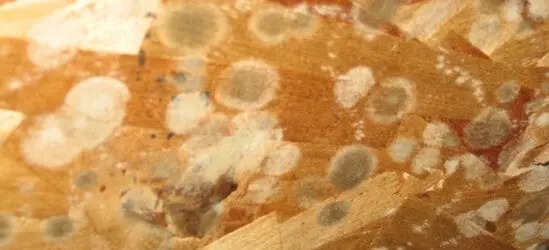
Several factors influence the smell of mold, including the type and quantity of mold present, its location, and environmental conditions such as temperature and humidity. Understanding these variables is crucial for identifying and addressing mold-related odors effectively.
To delve deeper into this topic, it is essential to note that different types of mold can produce distinctive odors. For example, black mold is often associated with a musty smell, while other molds may emit earthy or sour odors. The quantity of mold present also plays a significant role in the intensity of the odor. A small, localized mold colony may not produce a strong smell, whereas a large infestation can result in a pervasive and unpleasant odor.
Type of Mold
The type of mold present greatly influences the smell it emits, with some molds producing musty odors resembling decay while others may have earthy or fruity scents. Recognizing the mold type is essential for addressing safety concerns and implementing remediation measures.
Black mold, for example, often emits a strong musty smell that can be quite pungent and unpleasant. On the other hand, white mold may give off a more subtle earthy aroma, often mistaken for damp soil. Green molds can sometimes have a musty or grassy scent, while pink molds are known for their sweet and fruity fragrance. These distinct odor profiles are crucial in identifying the type of mold present, allowing for targeted remediation and prevention strategies.
Amount of Mold
The quantity of mold present can impact the intensity of its smell, with higher concentrations often leading to stronger odors. Testing for mold levels and understanding chemical interactions can help gauge the extent of contamination and guide remediation efforts.
Mold colonies, when left unchecked, can rapidly grow and spread in moist environments, contributing to a surge in odor production. As these colonies proliferate, the variety of microbial species interacting within them also increases, amplifying the complexity of emitted odors. Therefore, meticulous mold testing becomes crucial in not only quantifying the contamination levels but also in identifying the specific strains responsible for distinct smells. Understanding the volatile organic compounds released during mold growth aids in deciphering the underlying chemical mechanisms affecting odor intensity.
Location of Mold
The location of mold growth can impact the spread and detection of mold odors, with hidden or confined spaces often harboring stronger smells. Conducting testing in various locations and ensuring safety protocols are in place are crucial for addressing mold issues effectively.
When mold colonies develop in enclosed areas, the lack of proper ventilation can lead to the accumulation and concentration of mold spores, exacerbating the odor issues. This can pose challenges in early detection and mitigation efforts, as the concentrated odors are more difficult to pinpoint. In addition, mold growth in concealed spaces like wall cavities or under flooring can go unnoticed for extended periods, intensifying the overall impact on indoor air quality.
Therefore, thorough testing across different locations is essential to identify the extent of mold contamination and ensure comprehensive remediation. Implementing safety measures such as using protective gear during mold removal and improving ventilation systems can help reduce health risks associated with exposure to mold spores and mycotoxins.
Temperature and Humidity
Temperature and humidity levels play a vital role in mold growth and odor development, with higher moisture content and warmer conditions often exacerbating mold smells. Understanding the interplay between these factors and mold odors is essential for effective remediation strategies.
When the environment is warm and damp, it creates a perfect breeding ground for mold, leading to its rapid proliferation and the release of musty odors that can permeate indoor spaces. Mold-related odors are not only unpleasant but can also indicate structural damage and potential health risks associated with mold exposure. Controlling temperature and humidity levels through proper ventilation and moisture control methods is crucial in reducing the spread of mold and preventing decay odors from spreading throughout a property.
Presence of Other Substances
The presence of additional substances in the environment can interact with mold odors, altering their scent profiles and complicating detection efforts. Understanding these chemical interactions and adhering to EPA safety guidelines are paramount when addressing mold-related smells.
Chemical compounds such as ammonia or formaldehyde, when mixed with mold odors, can create a more complex olfactory experience, making it harder to pinpoint the exact source of the smell.
The interaction between mold spores and cleaning products may produce distinct odors that mask or mimic mold-related smells, leading to confusion during remediation processes.
Following EPA safety protocols is crucial to prevent exposure to harmful substances and ensure the effectiveness of remediation efforts in eliminating mold-related odors.
How Can You Identify the Smell of Mold?
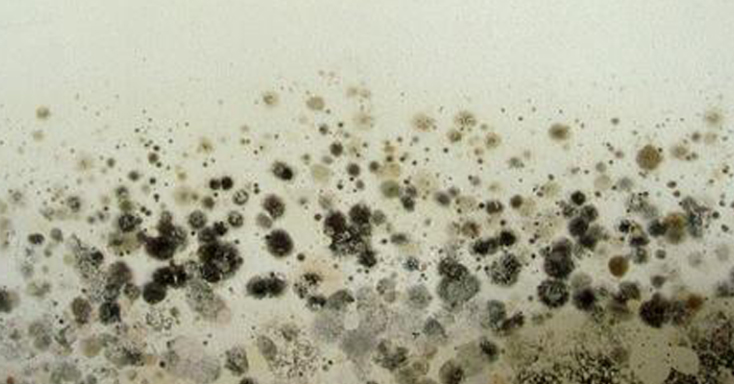
Identifying the smell of mold involves recognizing musty, earthy, or fruity odors that differ from typical scents in the environment. Conducting mold testing and consulting with professionals can help confirm the presence of mold-related smells and guide remediation efforts.
One common olfactory cue associated with mold is a musty odor, often described as a damp or stale smell that can linger in enclosed spaces.
It is crucial to differentiate between mold odors and normal household scents such as cooking smells or pet odors, as the latter can sometimes be mistaken for mold.
Testing for specific chemical compounds like mycotoxins and microbial volatile organic compounds (mVOCs) can provide more concrete evidence of mold presence.
Seeking expert advice is essential in correctly identifying the type of mold and determining the extent of the infestation, ensuring that appropriate remediation measures are taken to address the issue effectively.
What Should You Do If You Smell Mold?
How do you know if you need professional mold remediation? If you detect the smell of mold in your surroundings, it is crucial to prioritize safety and seek assistance from licensed professionals for mold testing and remediation services. Addressing mold-related odors promptly can mitigate health risks and prevent further contamination.
Upon noticing mold smells, the initial step should be to identify the source of the issue, as mold thrives in damp and dark environments.
Proper ventilation and moisture control are key to preventing mold growth. Wearing protective gear such as gloves and masks is essential when dealing with mold to safeguard your health. Contacting certified experts for a comprehensive mold inspection and subsequent remediation is vital. They possess the knowledge and tools to effectively eliminate mold, ensuring a safe and healthy indoor environment.
Frequently Asked Questions about What Does Mold Smell Like
What Does Mold Smell Like?
Mold can have a variety of distinct smells depending on the type and severity of the infestation. However, most molds are known for their musty, earthy, or damp smell.
Why Does Mold Have a Musty Smell?
The musty smell associated with mold is caused by a compound called geosmin. This organic compound is produced by certain types of mold as they digest organic materials, resulting in a musty, earthy odor.
What is the Scientific Name for the Musty Smell of Mold?
The musty smell of mold is known as microbial volatile organic compounds (MVOCs). These compounds are produced by microorganisms such as mold and bacteria as they break down organic matter.
Does All Mold Have a Musty Smell?
Not all molds have a musty smell. Some molds, such as Stachybotrys chartarum, also known as black mold, have a distinct and unpleasant odor resembling rotting wood or damp soil.
Why Does Mold Smell Damp?
The damp smell associated with mold is due to the release of alcohols, ketones, and aldehydes during the mold’s metabolism. These compounds have a strong, pungent odor that is often described as sour or acidic.
Can Mold Smell Like Cheese?
Yes, some types of mold can produce a cheesy odor due to the production of compounds such as butyric acid. This distinct smell is often associated with certain types of food spoilage caused by mold growth.
